How to Choose Soundproof Windows for Your Project
A pro’s guide to the importance of sound control and glazing strategies to control unwanted noise on a project.

Published 2020-09-21
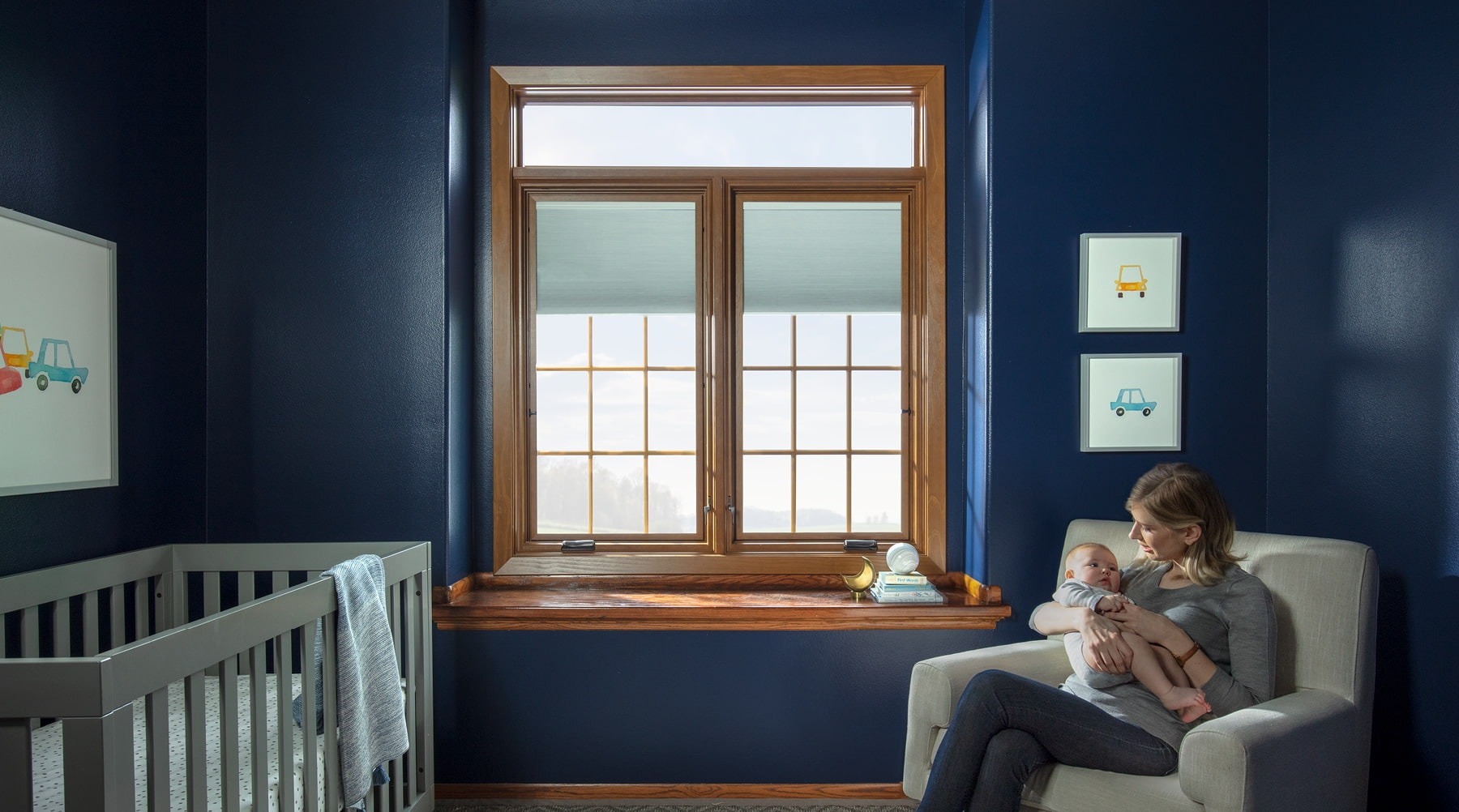
For builders, contractors and architects alike, sound control is an important factor to consider when designing for both residential and commercial, including new builds or remodeling existing structures. While completely soundproof windows and doors are a myth, when you specify windows and doors for a project, choosing the right glazing system can be a major factor to the success of the project, the soundproofing and the wellbeing of its occupants.
Importance of a Sound Control Strategy
It’s no secret that a solid sound control strategy matters in both residential and non-residential applications. For the residential application, a key component is the individual's health and well-being and the ability to get the proper amount of rest to connect with friends and family. At home, individuals are happier and less stressed. For non-residential or commercial spaces, individuals are more productive in spaces when distractions, including noise, are at a minimum.
A staggering 97 percent of the U.S. population is exposed to harmful levels of noise.22 From heavy traffic and planes to lawn mowers and garbage trucks, exposure to unwanted noise can cause unhealthy reactions like stress and high blood pressure, but also unproductivity in the workplace.
Building materials have an impact on the noise heard within a structure. Two metrics to measure sound transmission in building are Sound Transmission Class (STC) and Outdoor-Indoor Transition Class (OITC). As the measurements are rated higher, the more sound control a window can provide.
- STC. The most common of the two ratings is STC, which rates how well a building partition attenuates airborne sound. It was developed originally for interior partitions, ceilings and floors, but is also used to rate exterior walls, windows and doors. Designed with indoor sounds in mind, STC emphasizes higher frequency sounds, such as voices.
- OITC. In 1999, OITC was developed to better measure how well outdoor sound travels through exterior wall construction, including windows and doors. Noises such as construction, planes, sirens and traffic are typically of a lower frequency. Calculations for OITC put the focus on low frequency sounds.
In addition to reviewing STC and OITC values in material selection, dwelling type (i.e. single-family home, condo, etc.), proximity to high-traffic routes, energy efficiency and special interior functions (i.e. music studio, etc.) must be considered. A good STC rating is around 26. It is for these reasons that selecting the right window glazing solution for your project a multi-faceted decision.

Principles for Controlling Unwanted Noise
There are several techniques involved in the designing of single-family, multi-family and other structures as it relates to sound and noise. The U.S. Department of Housing and Urban Development recommends exploring four categories:
- Elimination. While the most extreme and difficult to achieve, consider if unwanted noise such as mechanical equipment operation, HVAC, elevators and others can be eliminated.
- Absorption. Using materials that absorb sound rather than reflect noise. For example, thicker and denser wall material can be used to absorb sound, whereas hard, non-porous surfaces reflect and encourage sound.
- Sound barriers. Use sound barriers in building layout to prevent sound from being transmitted from one adjoining area to another.
- Design. Consider designs to mask or absorb noise. For example, in a multi-family structure, apartments have similar use rooms adjacent. Quiet rooms, such as bedrooms, abut one another as do noisier rooms, such as kitchens.
When exploring these various techniques there are some basic principles to remember that can help improve the STC ratings on your project. Many of these principles, can be applied to windows and doors as a component of your structure’s glazing strategy.
- The mass of the material. The more the mass of the material, the more sound damping it provides.
- Overall thickness of materials. Increasing the thickness of materials, such as going from 2.5mm glass to 5.0mm glass improves the STC rating.
- Variations in thickness within a composite. In windows and doors, mixing glass thicknesses in an insulated glass assembly can help improve the STC rating.
- Eliminating leaks. Where air goes, sound goes. A key to installation and exceptional performance of Pella® windows and doors, the perimeter seal between the operating sash and frame needs to be complete. In older windows, a faulty perimeter seal between operating sash and frame can easily negate the ideal glass selection for your design.
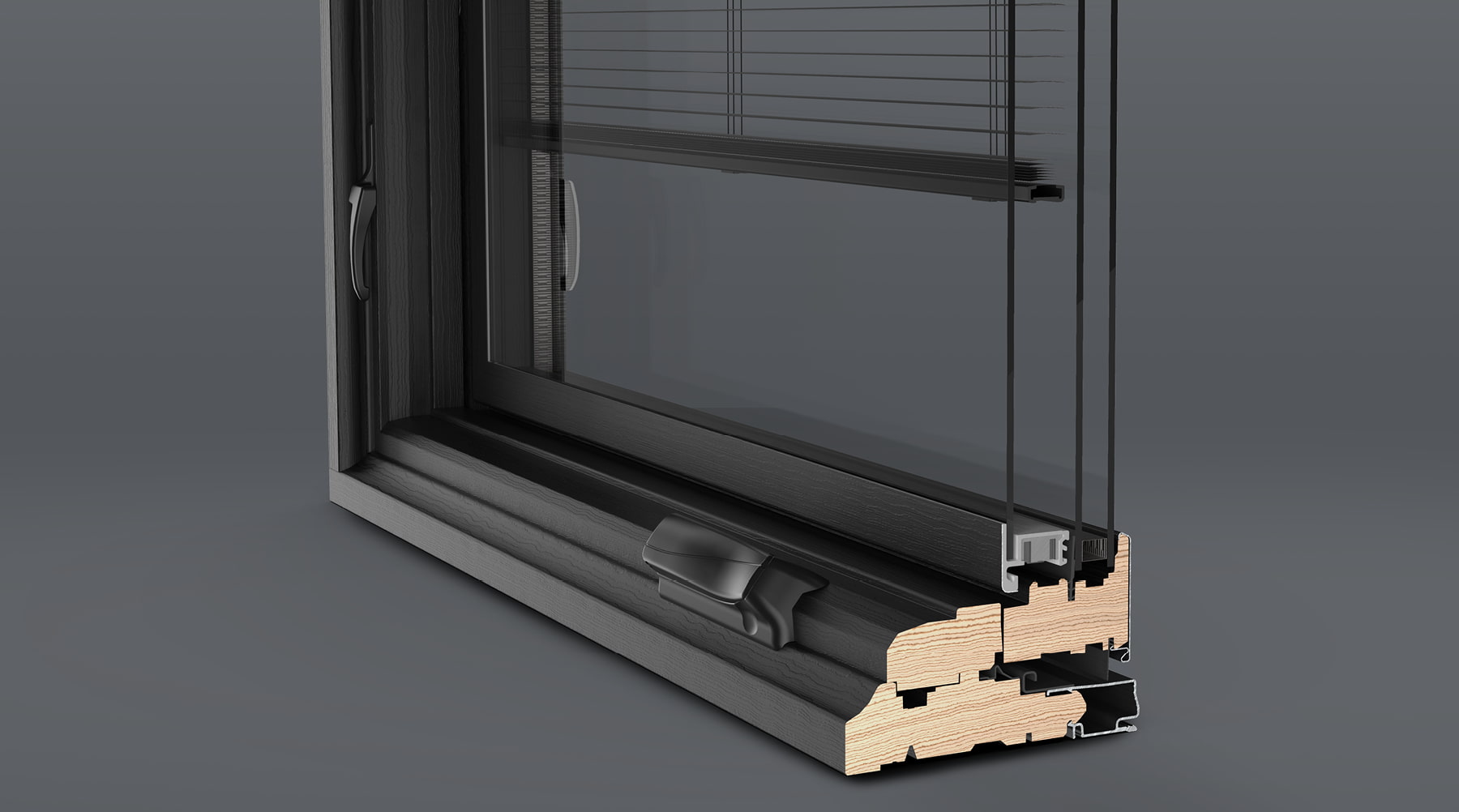
Single-Glazing vs. Dual-Glazing vs. Triple-Glazing
Let’s look at how the above principles apply to windows and doors. Several components of a window work together to help reduce the noise transition and improve the sound performance of a home or other structure.
Single glazing allows the most sound transmission across the material and is a standard glazing solution but is not widely used today.
Today, most standard dual-insulating glass options have STC ratings in the 26 range. These dual-glazing windows feature two panes of 3mm glass. The insulating space between the individual panes acts as an isolator, damping outside noises. The additional windowpane adds an additional layer of isolation, damping outside noises.
When one of the two panes are increased in thickness the STC improves further because the different increased mass of material blocks different sound frequencies. A dual-glazed window with varying glass thicknesses could be one pane of 3mm glass and one pane of 5mm glass.
One of the best glazing solutions for noise damping is using triple-glazed windows. As another pane of glass and gas space is added the STC rating is improved. If mixed glass thicknesses are utilized in addition to the third pane are used, the STC rating and the sound performance of the unit improves even further.
Installation is crucial to the sound control performance of a unit. Proper installation helps ensure airtight seals and helps to keep the noise out. The most common locations of air penetration are around the perimeter of a window or door frame where it is sealed to the wall construction, and where gaskets and weather strips are installed between sash and frame or between sash on hung windows. Ensuring windows are installed plumb and square will ensure proper weatherstrip contact, reducing air leaks that are accompanied by noise infiltration.
It is also important to insulate between the window frame and rough opening during installation to help reduce air leakage, reduce noise transmission, and increase the energy efficiency of the window and wall assembly.
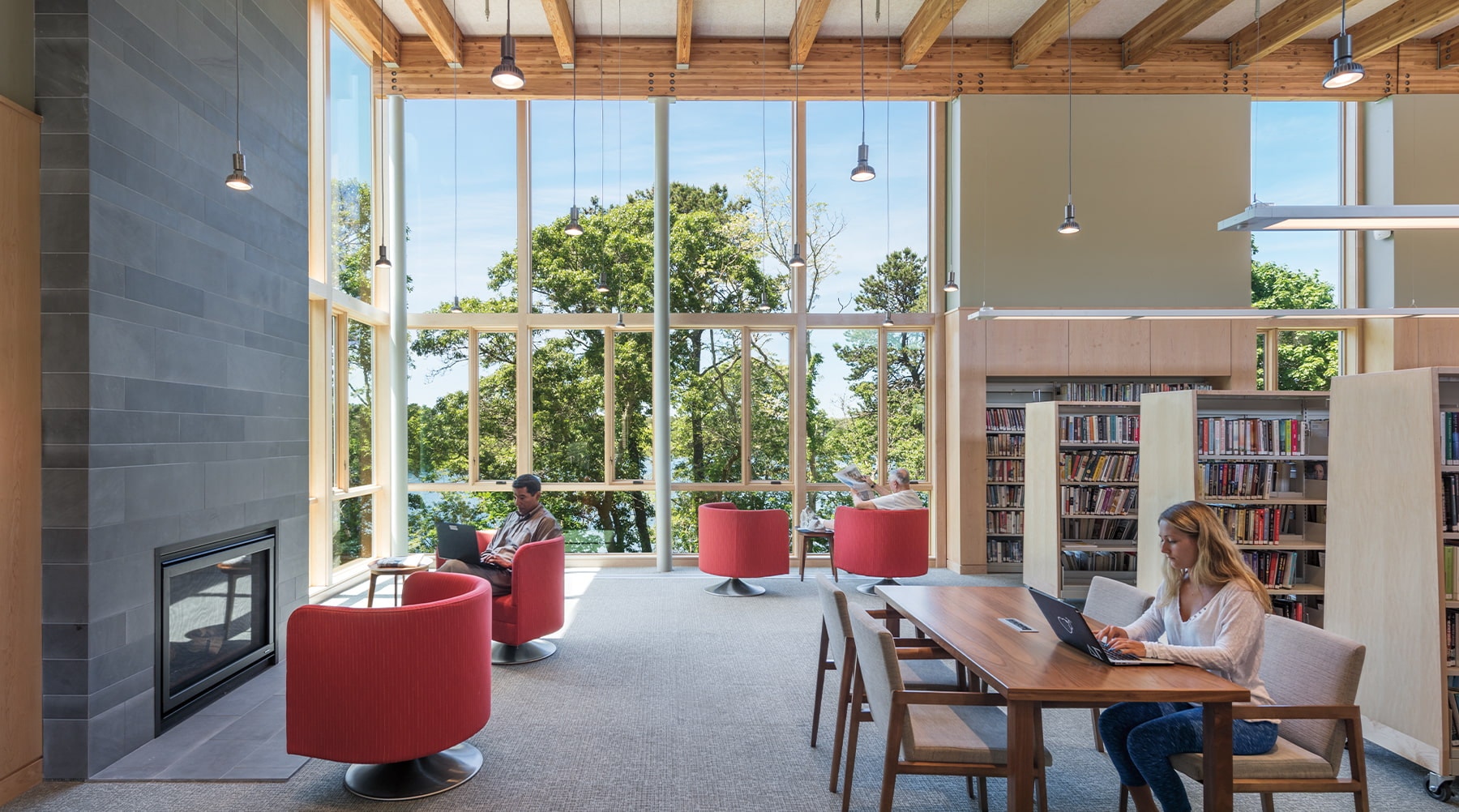
Does Laminated Glass Reduce Noise?
We hear this question a lot. Laminated glass does help improve the STC rating of a window or door, helping to eliminate more of the unwanted, outside noises. To continue on our previous examples, if a 10mm laminated glass is combined with a 5mm exterior glass pane, the result is an excellent STC rating in the mid-30s range.
With the increase in mass and sound absorbing interlayer that laminated glass provides, cost also increases. Although units with laminated glass can have an excellent STC rating, a good STC rating in the low-30s can also be achieved with triple-glazing utilizing an interior panel of standard 3mm glass. This is because variation in air space is also key in noise reduction.
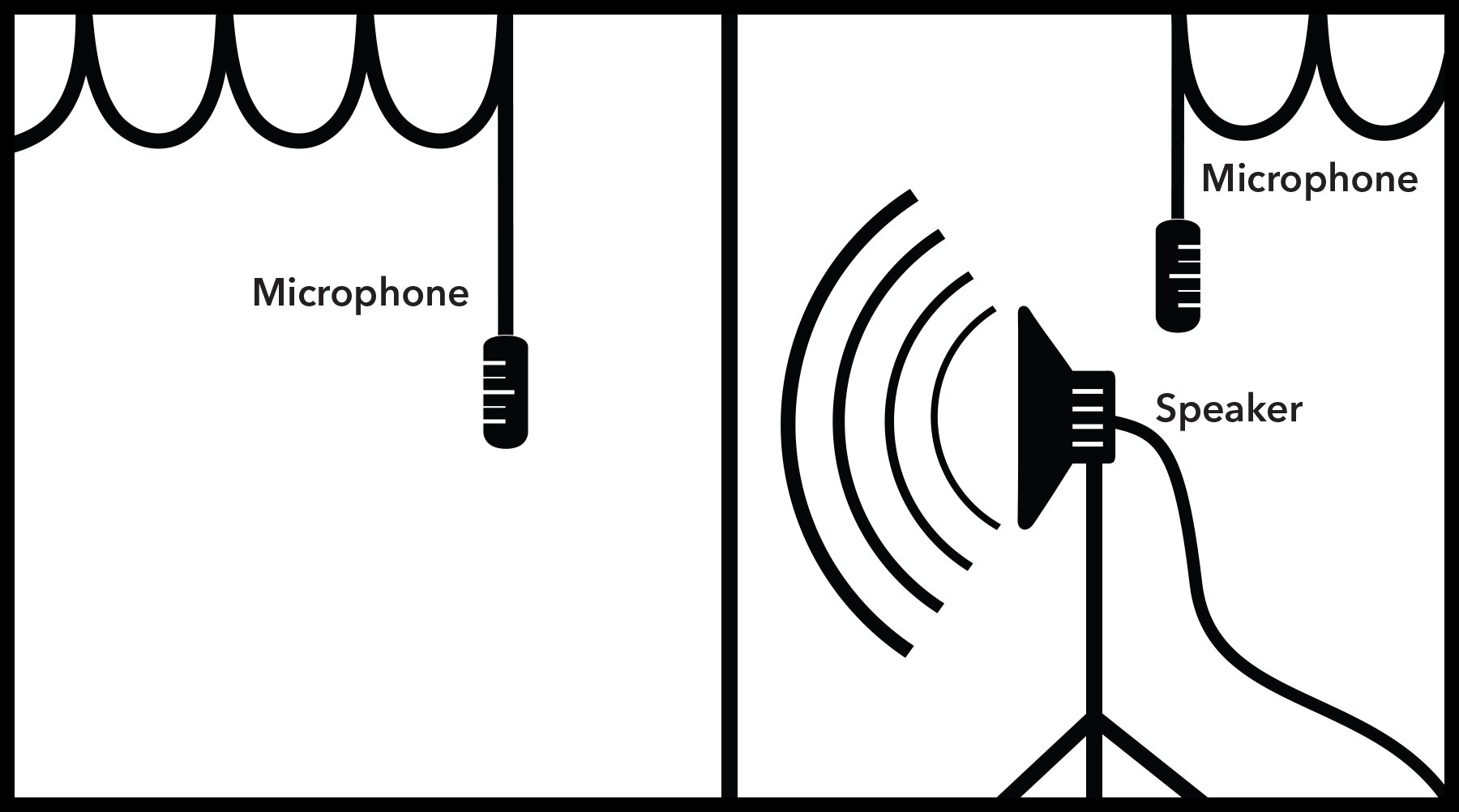
What Are the Best Noise Reduction Materials?
To measure sound transmission through windows, acoustic labs have the unit installed in the test wall chamber and completely sealed around the perimeter. For STC testing, continuous random noise is played with frequencies between 125 to 4,000 Hz, which is the typical range in human speech. Readings are taken at every sixteen 1/3 octave frequency band intervals.
While changing mass, introducing variations in thickness and how the panes are spaced are all ways in which glazing can impact the STC result, it is important to remember that window and door material also makes a difference.
No matter which window material you select, insulating window frames help reduce noise transfer. Wood is a natural insulator, insulating 1,750 times better than aluminum. Pella fiberglass windows have optional foam insulation to help reduce sound transmission in addition to increasing energy efficiency. And Pella’s quality vinyl frames have up to 18 insulating air chambers and optional foam insulation that help keep sound out while providing enhanced energy efficiency.
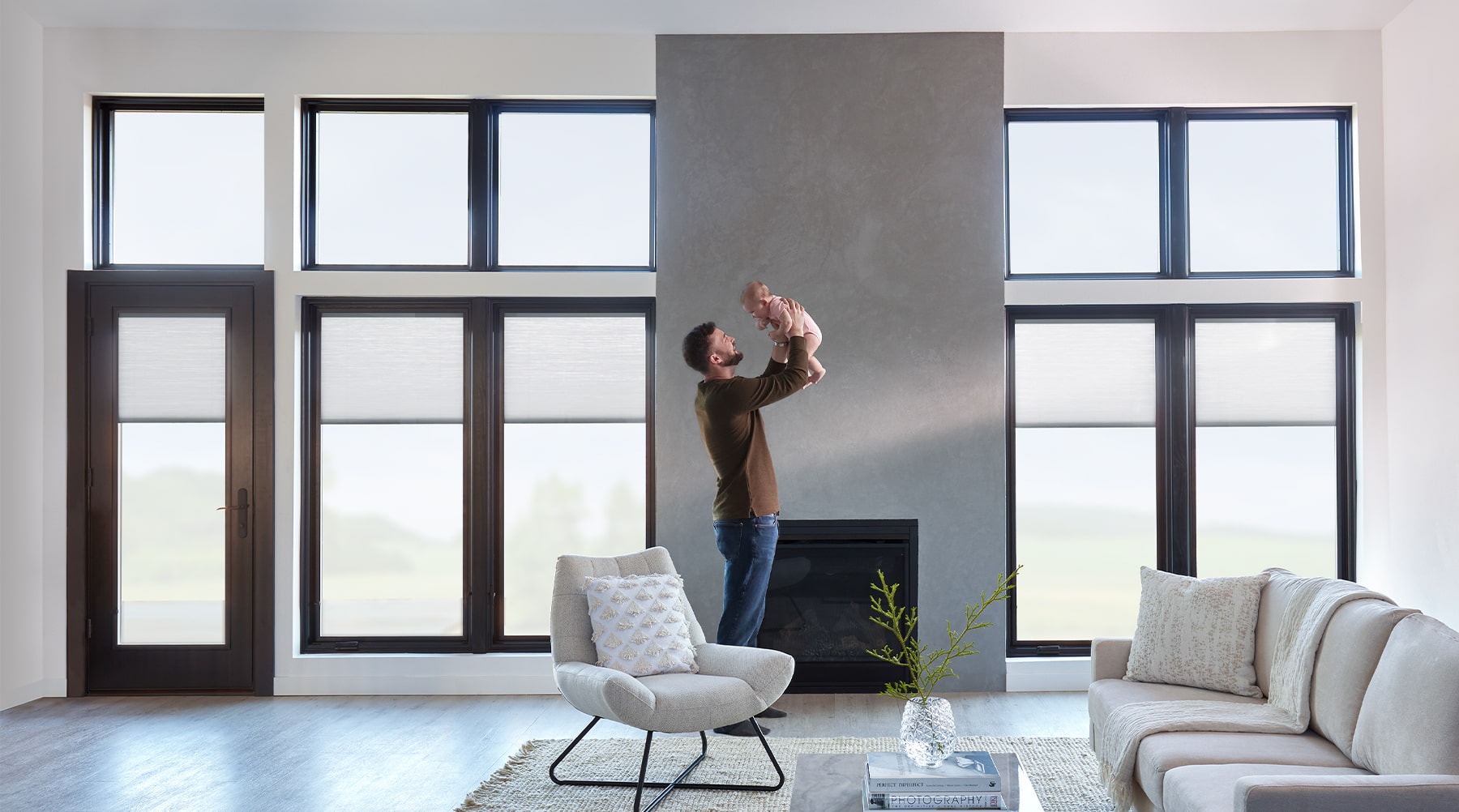
Best Soundproof Windows
Although a completely soundproof window or door does not exist, there are many solutions to choose from to find the best “soundproof” windows and doors for your project. You must consider your building’s sound control strategy and a window’s glazing and material.
At Pella, we created performance packages for Pella Lifestyle Series products that help you focus on improved sound control performance. Pella has been awarded the Quiet Mark Certification in recognition of our outstanding acoustic performance and excellence for certain Pella Lifestyle Series Sound Control Package products.25 Pella is the first and only window manufacturer in the U.S. to be awarded this seal.24
Upgrade to triple-pane glass designs from our Pella Lifestyle Series product offering, featuring Performance, Sound Control or Ultimate Performance packages for improved performance.
- Performance. The Performance package features a triple-pane glass design for a combination of both improved energy efficiency and sound performance. On average, it is 71% more efficient and reduces 34% more noises than single-pane windows.17, 18
- Sound Control. The Sound Control package is a triple-pane glass design featuring mixed glass thicknesses for enhanced sound damping. It delivers exceptional noise control for a quieter home, with 52% noise reduction when compared to single pane windows.18
- Ultimate Performance. The Ultimate Performance package is our best combination of energy efficiency and sound control and features AdvancedComfort Low-E triple-pane glass and mixed glass thicknesses for the best energy performance. Lifestyle Series windows with the ultimate performance package are 79% more energy efficient and reduce 52% more noises than single pane windows.17, 18
If
there is concern about noise issues at your project site, consider
investing in a sound study. A sound study can aide in the right
development of your project’s specifications, including if certain parts
of the project require higher sound control specifications than others.
If higher sound control specifications are not required on the entire
project, this could help control costs.
Request a Project Quote
Find the right Pella windows, doors and services for your project.